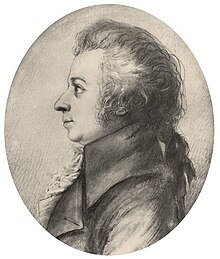
The String Quintet No. 5 in D major, K. 593 was written by Wolfgang Amadeus Mozart in 1790. Like all of Mozart's string quintets, it is a "viola quintet" in that it is scored for string quartet and an extra viola (two violins, two violas and cello).

The String Quintet No. 5 in D major, K. 593 was written by Wolfgang Amadeus Mozart in 1790. Like all of Mozart's string quintets, it is a "viola quintet" in that it is scored for string quartet and an extra viola (two violins, two violas and cello).
The work is in standard four movement form:
According to the Neue Mozart-Ausgabe, [1] the finale was printed, and known for some time, in an inauthentic edition, in which its main theme, originally a descending chromatic scale fragment, was replaced in most of its appearances in the movement by a more complicated zigzag ("Zickzackform") themelet.